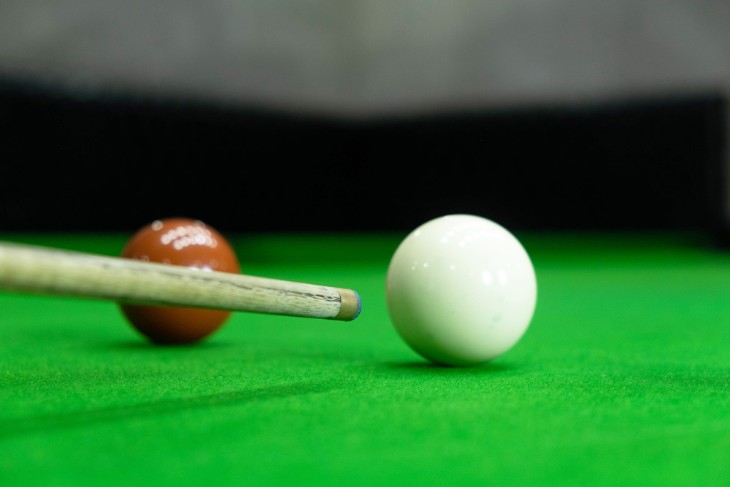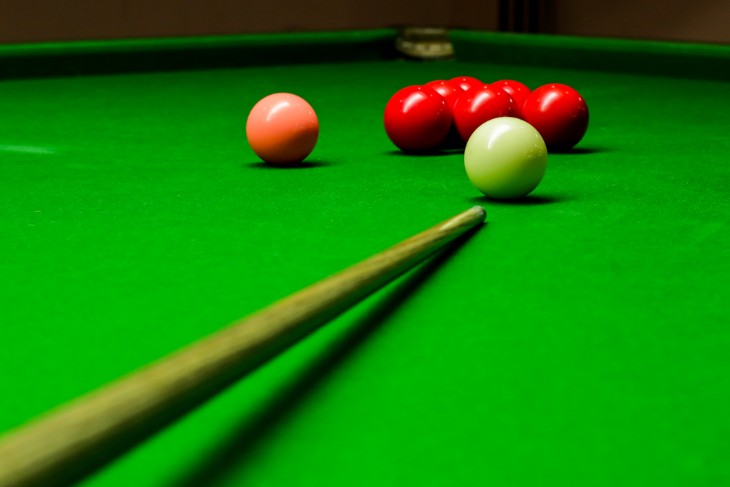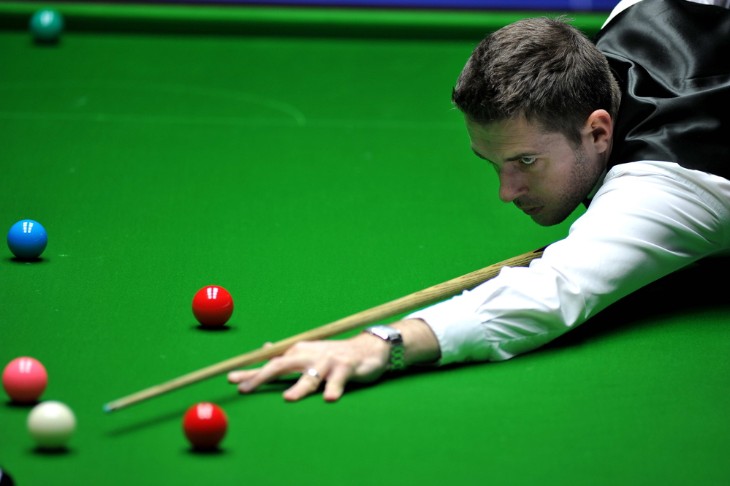- Historical Development of Snooker Cue Tips
- Material Science: Composition of Professional Cue Tips
- Brands and Manufacturers: Favourites Among Professionals
- Hardness and Density: Understanding Cue Tip Specifications
- Customisation and Personalisation in Cue Tips
- Maintenance and Care: Extending the Life of a Cue Tip
- Impact of Cue Tip Choice on Playing Style
- Notable Players and Their Preferred Cue Tips
- Conclusion
The world of professional snooker is marked by a meticulous attention to detail, with every aspect of the equipment being vital to a player's success. Among these, the cue tip holds a place of particular importance. A cue tip is the small, usually circular piece of material attached to the narrow end of a snooker cue, and it is this component that makes direct contact with the cue ball. Its condition, material, and maintenance can significantly influence a player's control and accuracy. For professionals, the choice of cue tip is a matter of personal preference, informed by years of experience and subtle nuances in their playing style.
While to an outsider, all cue tips might seem similar, the reality is far from this. Variations in density, hardness, size, and material result in a range of cue tips, each offering different levels of feedback, control, and impact on the ball. Professionals often experiment with different types to find the one that best complements their technique. Some prefer a softer tip for better control in delicate shots, while others opt for a harder tip for more power and consistency in break shots. The selection of a cue tip is a critical decision for a snooker player, akin to a violinist choosing the right bow.
Historical Development of Snooker Cue Tips
The evolution of snooker cue tips parallels the history of the game itself, reflecting changes in playing styles and technological advancements. In the early days of snooker, cue tips were rudimentary, made from leather and other basic materials, and they offered limited control and precision. As the game evolved and became more competitive, the need for better equipment led to innovations in cue tip design and materials. The quest for perfection in cue tips is a continuous journey, driven by player feedback and technological progress.
In the mid-20th century, significant advancements were made in the manufacturing of cue tips. The introduction of layered leather tips, for instance, was a game-changer. These tips, constructed from multiple layers of leather compressed together, provided players with more consistency and durability. This period also saw the introduction of synthetic materials, which offered different playing characteristics. Today, the market offers a wide range of cue tips, from traditional single-layer leather to complex, multi-layered synthetic blends. This diversity allows players to choose a tip that best suits their playing style and the conditions of the game.
Material Science: Composition of Professional Cue Tips
When considering what cue tips do professional snooker players use, a significant factor is the material composition of the cue tips. The majority are crafted from leather, prized for its natural properties that provide a perfect balance of firmness and elasticity. However, not all leathers are equal. The quality varies significantly depending on the source, with some leathers being softer and others harder. This variation affects the impact on the cue ball, influencing spin and power. Professional players often have a preference for a specific type of leather, based on their playing style and the feel they desire.
In addition to traditional leather, technological advancements have introduced synthetic materials into the mix. These synthetics are engineered to offer greater consistency and longevity than their natural counterparts. Some are designed to mimic the characteristics of leather, while others provide unique properties, such as increased grip or reduced mushrooming (the splaying out of the tip over time). The choice between leather and synthetic, or a combination of both, is a personal decision for each professional player, influenced by their experience and the specific demands of their playing style.

Brands and Manufacturers: Favourites Among Professionals
Delving into the brands and manufacturers of cue tips reveals a competitive market catering to professional snooker players. Certain brands have established themselves as leaders, often endorsed by top players. These endorsements are not just marketing strategies; they reflect the trust and preference of professionals in the quality and consistency of these brands. Some of the most renowned names in the industry include Elkmaster, Kamui, and Triangle, each known for different characteristics that appeal to various playing styles.
Elkmaster, for instance, is famed for its consistent quality and the soft feel of its tips, which many players find ideal for control and spin. Kamui, on the other hand, is often chosen for its layered tips that provide a unique hitting experience, favored by players who seek precision and durability. Triangle is another popular choice, known for its medium-hard tips that offer a balance between control and power. The preference for a particular brand or manufacturer is subjective and often based on a player's experience with different tips over their career. It is not uncommon for professionals to switch brands as they refine their playing style or in response to changes in manufacturing processes or materials.
Hardness and Density: Understanding Cue Tip Specifications
In the world of professional snooker, the hardness and density of a cue tip are crucial factors that significantly influence a player's performance. This aspect of what cue tips do professional snooker players use is often a subject of much discussion and personal preference. Hardness is typically measured on a scale, with softer tips allowing for more spin and feel, and harder tips providing more power and less deformation. The density of the tip, meanwhile, affects its durability and how it maintains its shape over time. A denser tip will not mushroom as quickly as a less dense one, maintaining a consistent contact area with the cue ball.
Professional players choose their cue tip's hardness and density based on their playing style and the conditions of the tables they play on. Softer tips, preferred by some for their ability to impart more spin, may wear down more quickly and require more frequent replacement. Harder tips, while lasting longer, might offer less feedback and require more precision in striking the ball. This balance between longevity, control, and power is a delicate one, and professionals often experiment with different grades before settling on their ideal choice. The selection process is a testament to the level of detail that goes into perfecting every aspect of a professional snooker player's equipment.
Customisation and Personalisation in Cue Tips
Customisation and personalisation play a significant role in the selection of cue tips among professional snooker players. Beyond the standard variations in hardness, density, and material, many professionals opt for custom-made cue tips, tailored to their specific requirements. This level of customisation allows players to achieve a perfect match with their playing style, ensuring that their cue behaves exactly as they expect it to during crucial moments in a match. Personalisation can include adjustments to the tip's diameter, thickness, and even the specific layering of materials in composite tips.
Professional players often work closely with manufacturers or skilled cue makers to develop their ideal cue tip. This collaboration involves detailed discussions about the player's technique, preferred feel, and the specific conditions they play under. The process might involve several iterations and extensive testing until the perfect balance of characteristics is achieved. This level of personalisation is a testament to the importance of the cue tip in professional snooker. It's not just a piece of equipment; it's a critical component that can significantly influence the outcome of a game. For professionals, the right cue tip is an extension of their skill, honed through years of practice and experience.
Maintenance and Care: Extending the Life of a Cue Tip
Proper maintenance and care are essential for ensuring the longevity and performance of a cue tip. This aspect is crucial when considering what cue tips do professional snooker players use, as even the highest quality tip can degrade without appropriate care. Regular maintenance includes shaping, scuffing, and occasionally replacing the tip. Shaping the tip to the desired dome curvature ensures optimal contact with the cue ball, enhancing control and precision. Scuffing, on the other hand, is about maintaining the tip's texture, which is vital for applying chalk effectively and avoiding miscues.
Professionals are meticulous about their cue tip care routines. They often use specific tools and techniques to keep their tips in top condition. For instance, a tip pick or scuffer is used to maintain the tip’s roughness, ensuring it holds chalk well. Some players also apply special conditioners or burnish the sides of the tip to prevent mushrooming and increase durability. Regular inspection is key, as any wear or deformation can significantly affect play. By investing time in maintenance, professionals ensure that their cue tips perform consistently over time, a critical factor in the high-stakes environment of professional snooker.

Impact of Cue Tip Choice on Playing Style
The impact of cue tip choice on a player's style is a significant consideration in professional snooker. Each type of cue tip offers different characteristics that can influence how a player approaches their game. For instance, a softer tip can enhance the ability to play spin-heavy shots, allowing for more aggressive and creative play. Conversely, a harder tip might favor a more power-focused style, ideal for break building and long potting. This relationship between cue tip choice and playing style is central to understanding what cue tips do professional snooker players use.
Professionals often adjust their playing style based on the characteristics of their chosen cue tip. For example, a player using a softer tip may focus on developing touch shots and employing spin more effectively. On the other hand, a player who prefers a harder tip might concentrate on improving shot power and accuracy over long distances. This adaptability is a hallmark of professional players, who understand that the right equipment can complement and enhance their natural style. Choosing the right cue tip becomes a strategic decision, aligning the equipment with the player's strengths and the demands of the game.
Notable Players and Their Preferred Cue Tips
Exploring the preferences of notable players offers valuable insights into what cue tips do professional snooker players use. Each player's choice is often a reflection of their playing style and the particular nuances of their game. For instance, a player renowned for their precision in long shots might prefer a harder cue tip that offers consistency and minimal deformation. In contrast, a player who excels in intricate cue ball control may opt for a softer tip, providing enhanced feedback and spin capabilities.
Many professional players are known to be quite particular about their cue tips, often sticking to a specific brand or type throughout their career. Some even have long-standing relationships with specific cue makers, who tailor the tips to their exact specifications. This level of specificity demonstrates how critical the right cue tip is in professional snooker. The players' endorsements and preferences also influence amateur players and enthusiasts, who often look to these professionals for cues on what equipment to choose.
Conclusion
In conclusion, the significance of cue tips in the realm of professional snooker cannot be overstated. The meticulous selection and maintenance of cue tips are integral to a player's performance and success. Professionals understand that the right cue tip can enhance their natural playing style and provide the precision and control needed at the highest levels of the game.
For more information:




.webp)


 (1).webp)




















